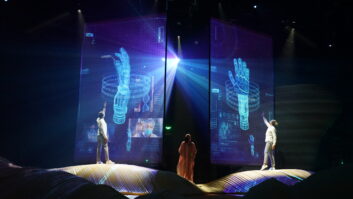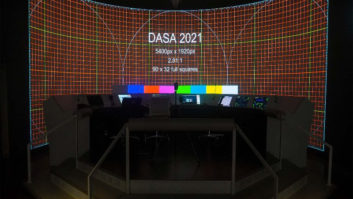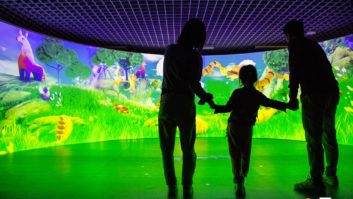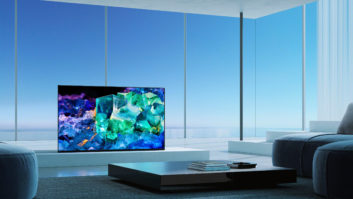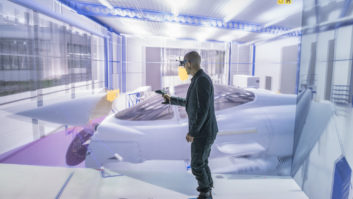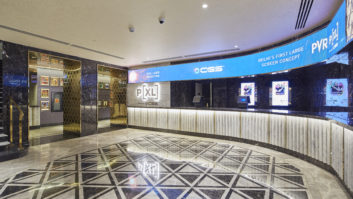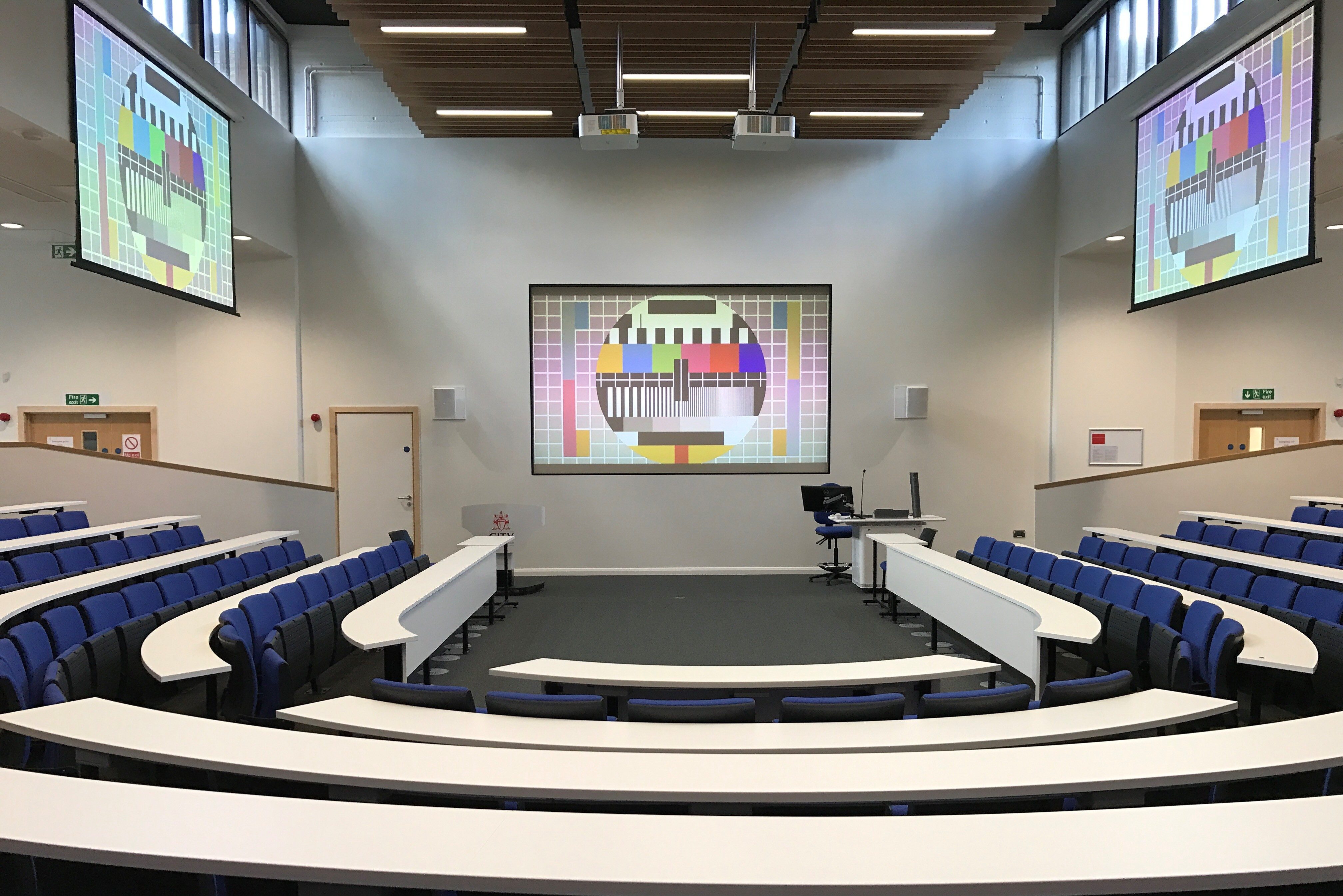
Much has been said about the fall in projector sales over the last few years. Steve Montgomery continues our special report by finding out what those on the frontline think about how to make money in this market.
Sales of projectors throughout the world have declined rapidly as flat panel displays have increased in size and fallen in price. Research by market analyst Futuresource Consulting indicates that in the corporate sector, the primary target market for smaller projectors, ownership of projectors is expected to fall by 10% by 2018, while flat panel displays will rise by 25%; and this declining projector trend is accelerating.
Set against an overall rise in the total number of meeting rooms, huddle rooms and collaboration areas, this is a little concerning for projector manufacturers and installers dedicated solely to this technology. However, there is still sufficient demand to create significant business revenues. John Dykes, Casio’s business development manager, points out: “The education sector remains an important market for projection but with the advent of videoconferencing, the corporate market is seeing hundreds of new meeting rooms being created each week. Distributors are offering a complete package of interactive flat panels, projection and flat panel displays to satisfy the needs of the market and to offer integrators a full range of products to suit each application. 4K is set to go from strength to strength for the projector market. The increase in resolution of content and the rise of BYOD devices across learning environments means that displays technology must be futureproofed and produce a good quality image.”
New opportunities
The market for projectors in other sectors is booming and the launch of new technologies and models is opening up new opportunities. Smaller, portable projectors with integral batteries and WiFi connectivity offer an advantage over flat panel displays for mobile presenters “Projectors can be used anywhere there is a power source,” says Joe Ahmed, Optoma EMEA head of marketing. “Optoma’s ultra portable LED projectors fit into the palm of your hand and are sufficiently light and portable to be taken out for meetings. Optoma’s latest ML330 device has an internal Android OS processor with Bluetooth and wireless internet connectivity. They can be used without a PC, making them perfect for offsite meetings. A flat screen is less flexible to pop under your arm and take with you.”
James Hsu, director of global product marketing at Vivitek, agrees: “The market for mainstream data projectors around 3,000 lumens is reducing because an increasing number of corporate meeting rooms and classrooms are adopting FPD solutions. Meanwhile, the market for small HD LED smart projectors with an embedded battery and an Android OS that are capable of wireless streaming is growing significantly, thanks to their small size, ultra-portability, and flexibility for sharing media from a smartphone or content from the internet on the move.” Larger laser units come with multiple mounting options, are capable of front and rear projection, have frames to allow quick and easy mounting onto a truss or ceiling and often have ranges of lenses including ultra-short ones to produce large images over a short throw distance.
Projection is still the most economic means of providing large displays. Hsu continues: “Projection is all about the big image experience. Currently an installation requiring an image of 80in to 90in or above should employ projectors rather than LCD displays. The industry is asking for brighter projectors and higher-resolution large-venue projectors, with as little maintenance as possible.”
New laser projection technology is delivering benefits and advantages to the market and allowing integrators to access new application opportunities. Although the initial capital cost is greater, the long-term operational costs and reduction in maintenance overheads makes them appealing across the full installation spectrum.
Laser vs lamp
“The key differentiator for laser compared to lamp-based projectors is the long lasting maintenance-free operation time of typically between 20,000 and 30,000 hours, which leads to a highly beneficial total cost of ownership over the lifetime of the unit,” says Thomas Walter, section manager strategic product marketing for NEC Display Solutions Europe. “While a laser projector may have a higher initial purchasing cost than its lamped counterpart, the additional expense is more than recouped after a few years of operation. The lamp lives are significantly different, with 2,000 hours for a standard unit and 20,000 hours for an equivalent laser device, which is the key saving over a long period. A standard lamp and filter may need to be changed five or six times over that period. Power consumption also affects the equation, with laser around 15% lower. TCO for a lamp projector can be as much as double that of a laser after nine to 10 years.”
Many projectors in fixed installations in conference centres and auditoriums, as well as museums and visitor centres, are fixed in locations that are difficult to access. “Conference centres, auditoriums and other large venues are finding projection to be a fantastic option where the space allows the throw distance, and the nature of laser projectors means that the integrator can fit and forget them, knowing that they will provide reliable, long-term service for years to come, without any intervention,” says Stuart Holmes, director of PSCo. “Accessing them to change the lamp might mean rigging a scaffold tower to gain access to the projector and taking the room out of service for a whole day, or carrying out the service overnight with even more expense.”
Projectors are still attractive to the education sector, and lasers provide an edge over lamp devices for several reasons. Walter continues: “In addition to maintenance-free and highly reliable operation, higher education needs instant power-up and shutdown so that classes or lectures can commence immediately, ensuring no interruption to the lecturer’s presentation.”
Other applications with space or access constraints also gravitate towards laser projectors. Retail is a good example, as Holmes points out: “Retailers are incorporating projection where there is a lack of access from the front or rear, or where the application requires a product with a long lifecycle. Laser projectors are now bright enough to be used for displays in shop windows and it is possible to use projection mapping onto products or models to create more engaging displays.” Engineering and media applications are also considering the use of laser projectors and taking advantage of the brightness and size capabilities they offer.
Lamped projectors have not been suited to many installations in which space is severely restricted or an off-angle or portrait image is required, or have to be mounted in hostile environments. These opportunities are now opening up as laser-based devices do not suffer from such severe restrictions. “With a unique dust resistant design, up to IP6X dust resistance certification, and ability to be mounted in any orientation, Optoma DuraCore laser products are door-openers to new applications that would not have been viable with lamp based technology,” explains Ahmed. “These additional opportunities can far outweigh the reduction in revenues from servicing and replacement lamps to installers and dealers.”
www.casioprojector.com
www.nec-display-solutions.com
www.optoma.com
www.psco.co.uk
www.vivitek.eu


